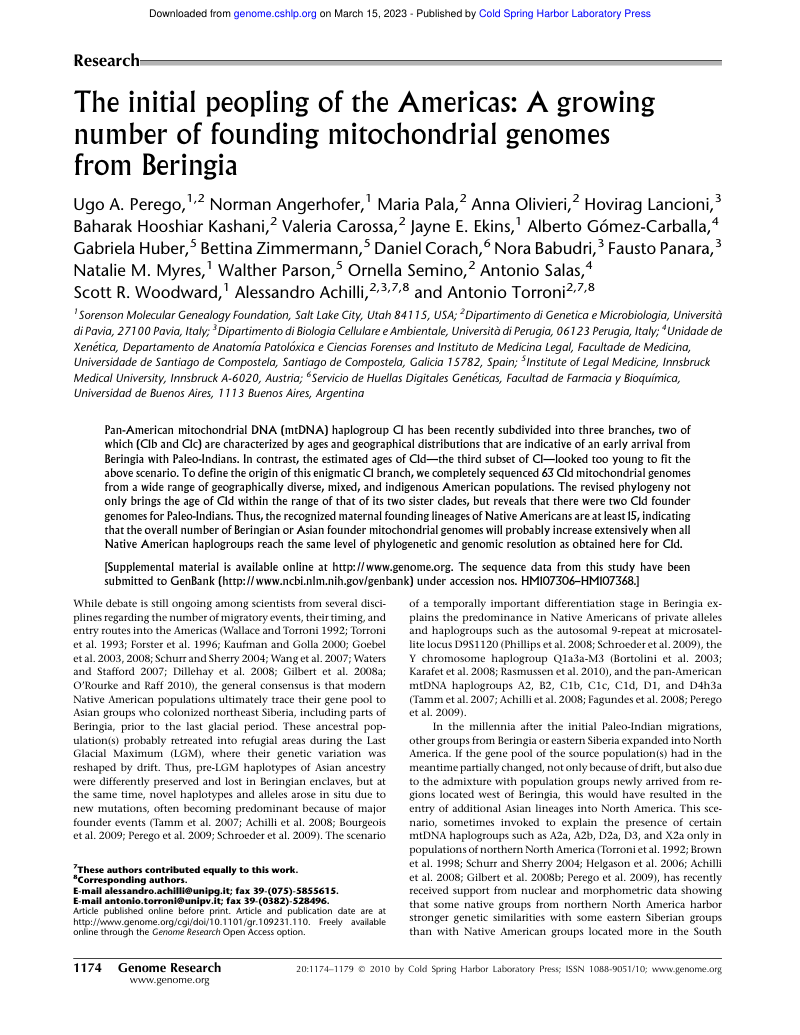Ugo A. Perego et al. review DNA evidence for the earliest population of ancient America.
- Type
- Academic / Technical Report
- Source
- Ugo A. Perego et al. LDS
- Hearsay
- DirectSecondary
- Reference
Ugo A. Perego et al., “The Initial Peopling of the Americas: A Growing Number of Founding Mitochondrial Genomes from Beringia,” Genome Research 20, no. 9 (2010): 1174–1179
- Scribe/Publisher
- Genome Research
- People
- Ugo A. Perego et al.
- Audience
- Reading Public
- Transcription
Pan-American mitochondrial DNA (mtDNA) haplogroup C1 has been recently subdivided into three branches, two of which (C1b and C1c) are characterized by ages and geographical distributions that are indicative of an early arrival from Beringia with Paleo-Indians. In contrast, the estimated ages of C1d—the third subset of C1—looked too young to fit the above scenario. To define the origin of this enigmatic C1 branch, we completely sequenced 63 C1d mitochondrial genomes from a wide range of geographically diverse, mixed, and indigenous American populations. The revised phylogeny not only brings the age of C1d within the range of that of its two sister clades, but reveals that there were two C1d founder genomes for Paleo-Indians. Thus, the recognized maternal founding lineages of Native Americans are at least 15, indicating that the overall number of Beringian or Asian founder mitochondrial genomes will probably increase extensively when all Native American haplogroups reach the same level of phylogenetic and genomic resolution as obtained here for C1d.
- Citations in Mormonr Qnas
The B. H. Roberts Foundation is not owned by, operated by, or affiliated with the Church of Jesus Christ of Latter-day Saints.

